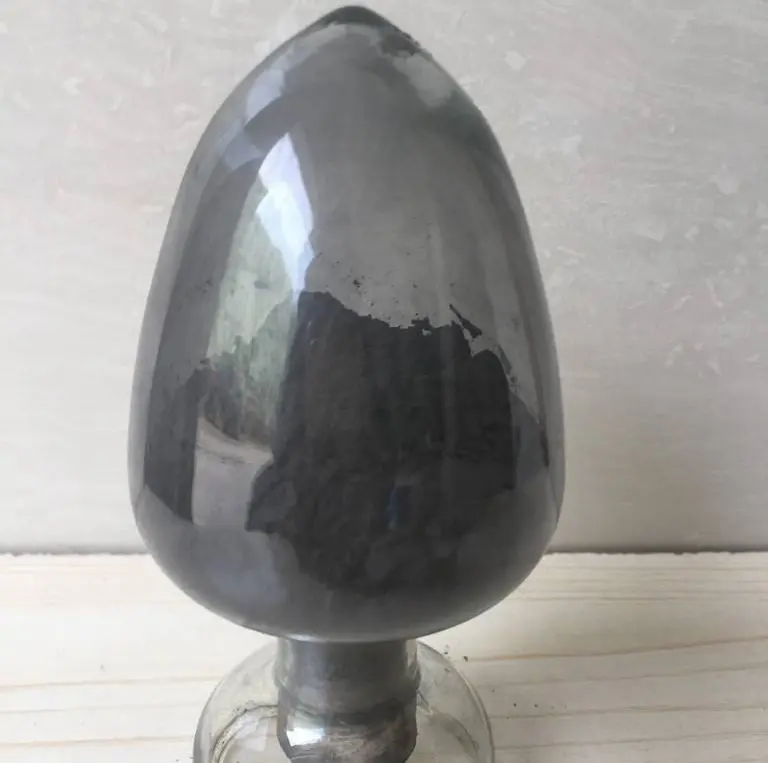Spherical Copper Nickel Alloy CuNi Powder
Formula | CuNi |
Synonyms | spherical CuNi particles, spherical Copper Nickel powders, Copper Nickel Powder, Copper Nickel thermal spray powder, CuNi gas atomized powder |
Appearance | Black Powder |
Particle Size | 15-53 um, 45-105 um, can be customized upon request |
Melting Point | 1100-1240°C |
Density | 8.05 g/cm 3 |
UNS Standard | C70600, C71500, C71640 |
Modulus of elasticity | 135 MPa |
Description of Spherical CuNi Powder
CuNi powder, also known as copper-nickel powder, is a powdered alloy composed primarily of copper and nickel. The typical composition ranges from 70% to 90% copper, with the remainder being nickel. This powder is known for its excellent corrosion resistance, good thermal and electrical conductivity, and high strength.
Princeton Powder is a leading supplier of CuNi powder. We specialize in a comprehensive range of spherical powder products and possess extensive expertise in additive manufacturing (3D printing) industry. With our expertise, we are confident in supporting your projects effectively and provide you with reliable solutions.
Physical and Mechanical Properties
| Cu-Ni alloy | UNS and Def Stan | 0.2% Proof Strength N/mm2 | Tensile Strength N/mm2 | % Elongation | Hardness Hv |
| 90-10 | C70600 | 100 | 300 | 30 | 90 |
| 70-30 | C71500 | 120 | 350 | 35 | 100 |
| 66-30-2-2 | C71640 | 150 | 420 | 30 | 110 |
| 30Ni-2Cr | Def Stan 02-886 | 350-750 | 550-820 | 20-35 | 175-225 (HB) |
| Property | Units | 90-10 | 70-30 |
| Density | kg/dm3 | 8.90 | 8.95 |
| Melting point | °C | 1100-1145 | 1170-1240 |
| Specific heat | J/KGK | 377 | 377 |
| Thermal conductivity | W/mK | 50 | 29 |
| Linear expansion coefficient 10-300°C | 10-6/K | 17 | 16 |
| Electrical resistivity | Micro-ohm/cm | 19 | 34 |
| Modulus of elasticity | GPa | 135 | 152 |
| Modulus of rigidity | GPa | 50 | 56 |
Particle Size distribution
0-15μm, 15-53μm, 45-105μm, 45-150μm. (Various particle sizes can be customized)

Applications
CuNi powder is used in various applications, including metal coatings, additive manufacturing, and the production of components for marine, electrical, and thermal industries. Its distinctive properties make it ideal for environments exposed to seawater and other corrosive conditions.
Spherical CuNi Powder Reference
- The main bottleneck in obtaining high-performance thermoelectric (TE) materials is identified as how to decouple the strong interrelationship between electrical and thermal parameters. Herein, a precise interface modification approach based on the powder atomic layer deposition (ALD) technology is presented to enhance the performance of CuNi alloys. ZnO and Al2O3 layers as well as their combinations are deposited on the surface of powders, typically in 10–100 ALD cycles, and their effects on the TE performance of bulks is thoroughly investigated.
CuNi 90/10: Composed of 90% copper and 10% nickel. It offers good corrosion resistance and is widely used in marine applications, heat exchangers, and condensers.
CuNi 70/30: Composed of 70% copper and 30% nickel. This alloy has even higher corrosion resistance and mechanical strength than 90/10, making it suitable for harsher environments, such as in shipbuilding, desalination plants, and power generation.
CuNi 80/20: Composed of 80% copper and 20% nickel. It balances the properties of the 90/10 and 70/30 alloys, offering a mix of good corrosion resistance and strength, and is often used in electrical and thermal applications.
Low magnetic permeability is required in some applications, such as minesweepers. Although 70-30 Cu-Ni is essentially non-magnetic, 90-10 Cu-Ni has a higher iron content. Its permeability can be between 1.01 and in excess of 1.2, depending on final heat treatment conditions.

